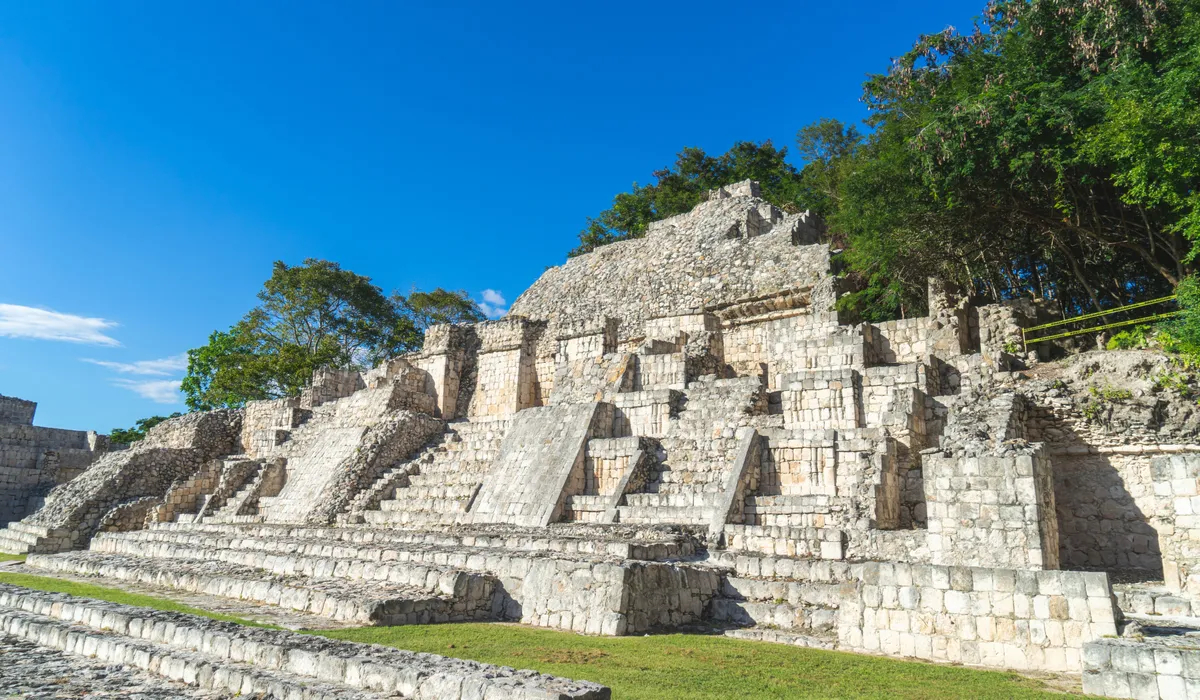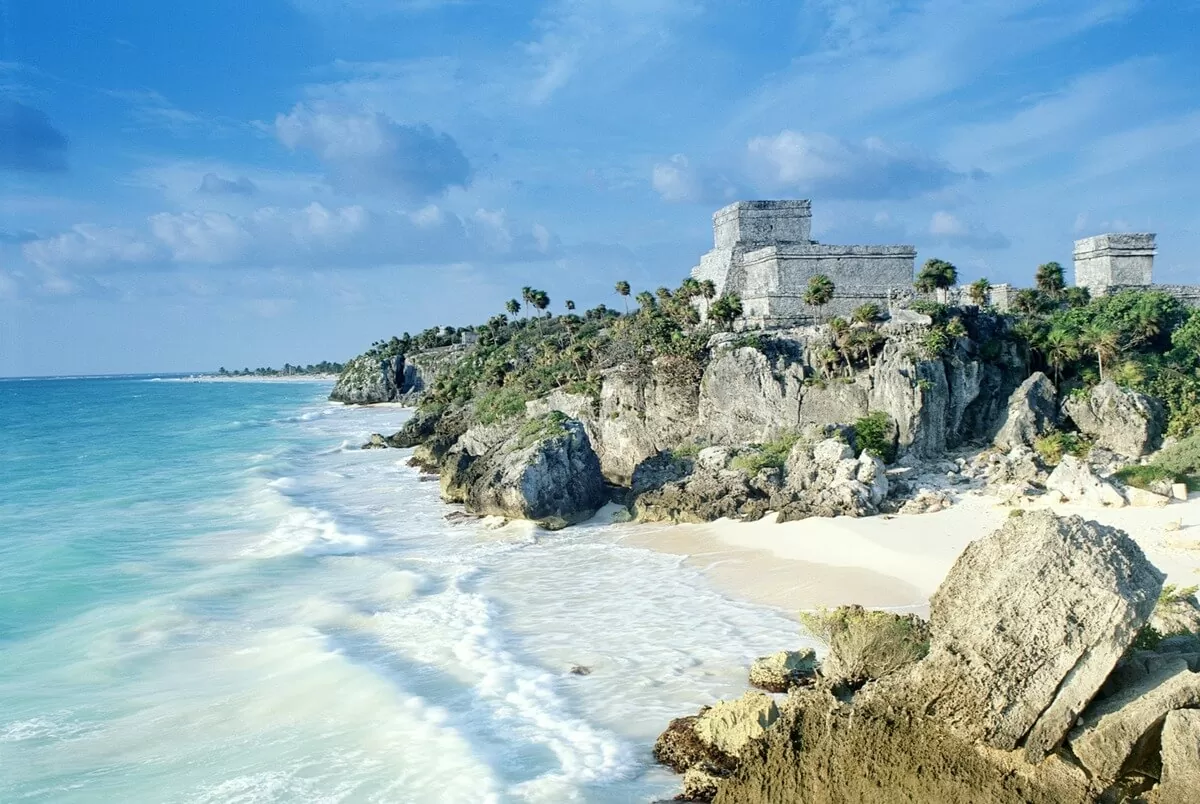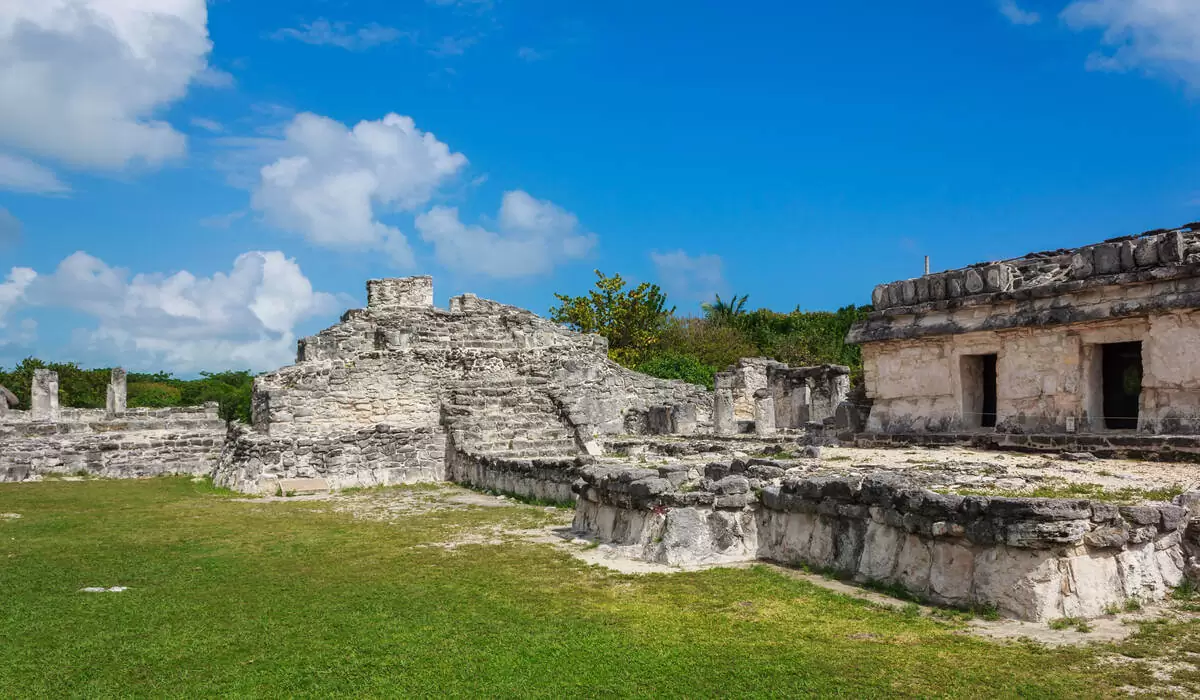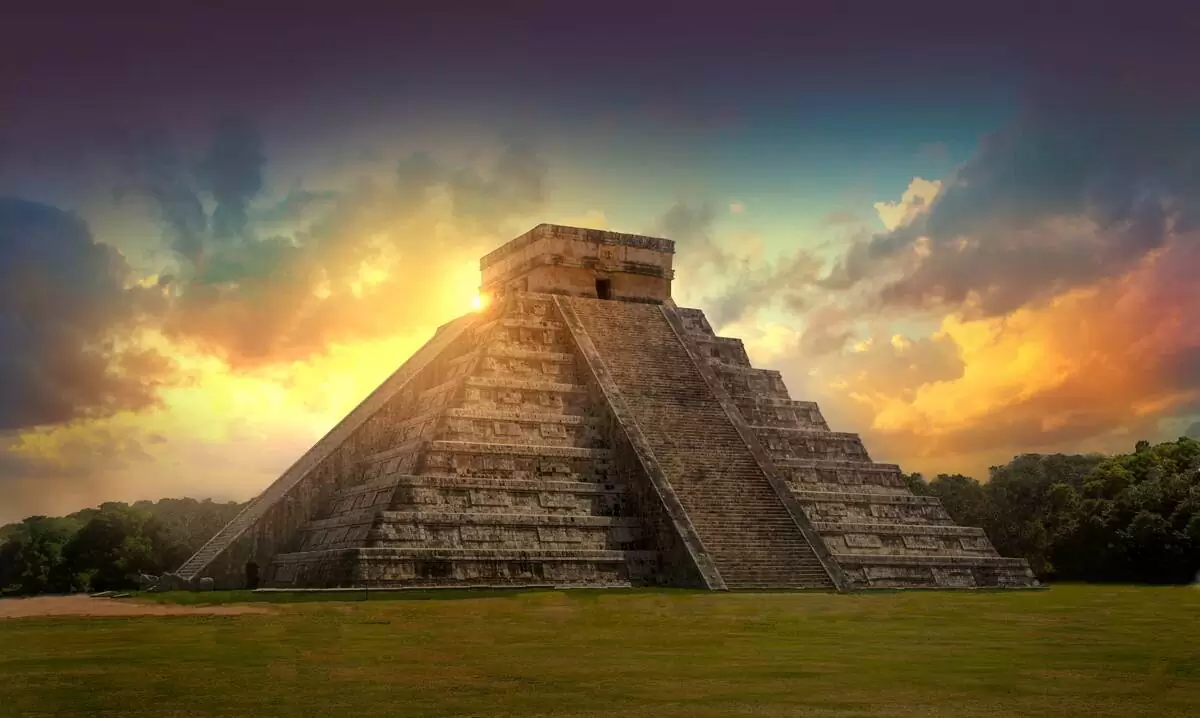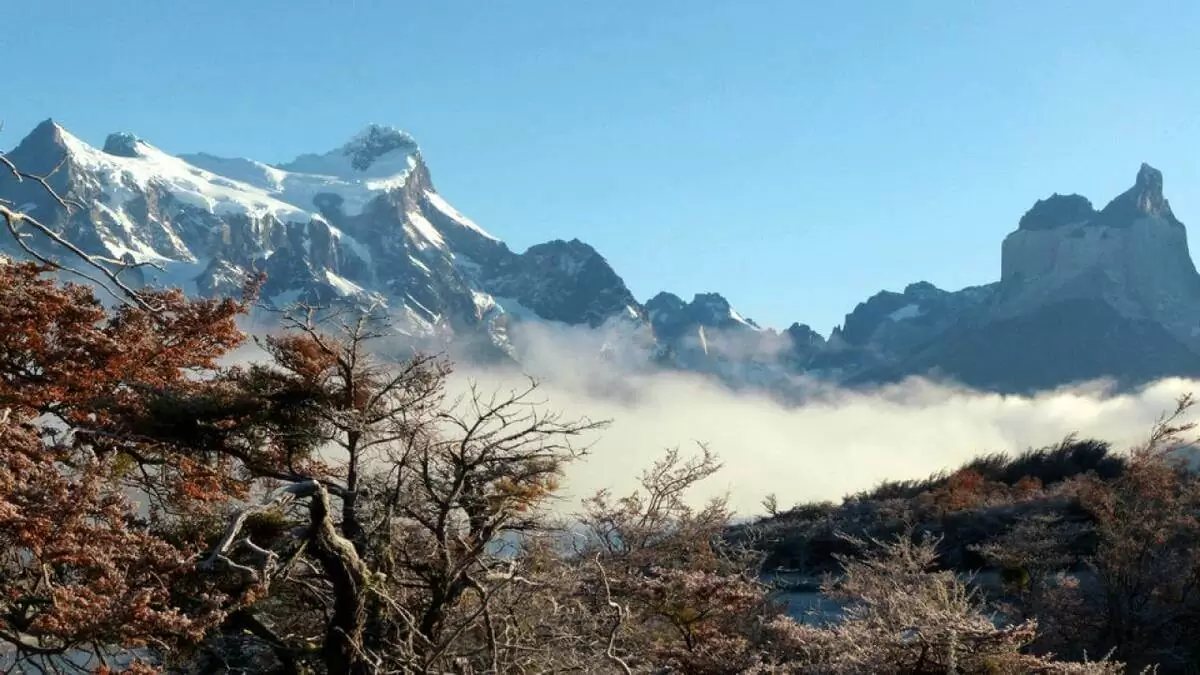The traveler strolls through the archaeological site of Edzná, to the south of Campeche, thinking that some cities are like immovable objects in time and that, in times such as our own, dominated by the idea of the present, taking a strolls like this a good idea, strolls that allow us to inhabit time, living, moving and walking inside it.
Founded around 400 B.C., its peak was reached during the late Classic period. A gradual decline began in the year 1000, leading to its eventual abandonment in 1450.
- Edzná was a political, economic, and religious center during the Classic period of Mesoamerican chronology.
- The site showcased advanced agricultural practices and hydraulic systems.
- Edzná was rediscovered in the late 19th century through a meticulous examination of ancient maps.
- The Great Plaza at Edzná served as a focal point for religious and ceremonial life.
In 1906, the political chief of the former Campeche Party announced the existence of the site to the governor, but it wasn’t until 1927 that Nazario Quintana Bello, Monument Inspector for SEP, gave it the name Edzná.
The most important restoration to Edzná was carried out, under INAH sponsorship, between 1970 and 1976, by Román Piña Chan.
The last works (1994-1997), were directed by Antonio Benavides, with Guatemalan laborers and bricklayers from the Quetzal- Edzná refugee camp, as well as the sponsorship of the European Union.
The site is lodged in the bottom of a valley which, during rainy season, used to flood. To solve the problem, a complex network of canals was built, which started in the center of the settlement and spread radially towards neighboring farmlands and towards a lagoon turned into a dam through retaining walls.
The canals were used to transport goods and people and, obviously, also served defensive functions. Thus, the territory’s agricultural exploitation was optimized and more intense than other places, which explains the importance the city once had.
The most important monumental constructions lay on the Main plaza, which was accessed through two sacbés (Mayan roads).
The Great House, known locally as Nohochná, is a structure that was used for administrative functions, although it could have also have been used as a gallery to witness celebratory events in the Main plaza and the Great Acropolis.
The South Temple dates from between 600 to 900 A.D. and has 5 structures with demolished frames.
The Ball Court is comprised of two parallel structures, which were possibly used to place images of the deities associated with the game, as well as game equipment.
The best known structure, the Temple of the Large Masks, named due to the stucco masks that decorate it, is dedicated to the Solar god, who is represented with anthropomorphic characteristics and esthetic traits of the elite such as crossed-eyes, dental work, nose and ear rings, ear shells, and great zoomorphic headdresses.
Close by, the Small Acropolis is a structure dating back to 200 B.C., on its summit there are four buildings which form a central court.
Some of the more ancient elements of Edzná come from this place: a large stucco figurehead of the Preclassic Superior, three stelae of the eighth Baktún (between 41 and 435 A.D.) and ceramics dated between 400 and 250 B.C.
The Large Acropolis has a wide quadrangular base, with several monumental structures. It emphasizes the Building of Five Flats, a five-level pyramid with numerous rooms and a cross-shaped sanctuary.
The roof’s cresteria, which used to be decorated with stucco-modeled figures, has been preserved.
The extravagantly named “Magical Old Woman” is located 800 meters northwest of the Building of Five Flats. It is one of the largest structures in Edzná.
Lastly, the Puuc Courtyard and the North Temple deserve mention, with a wide stairway whose main axis led to two elongated centerlines, which were covered and decorated with panels holding small drums. Facing this temple is the C-shaped platform corresponding to the latest Edzná occupation: 1200-1400 A.D.
The most important features in Edzná are the 20 plus monumental buildings that tell us about the concentration of political, economic and religious power that occurred in pre-Columbian times, especially between 600 and 1200 A.D.
Edzná was the regional capital, where the inhabitants built an ingenious canal system of up to 6 kilometers long, as well as deposits to capture, store, and distribute water, and the stone roads that connected some of the most important architectural groups.
The Edzná Maya Archaeological Site, nestled in the Campeche state of Mexico, stands as a testament to the ingenuity and cultural sophistication of the Maya civilization.
This ancient city, whose name translates to ‘House of the Itzáes,’ flourished from 600 to 900 AD, offering profound insights into the Maya way of life.
Its strategic utilization of natural resources, exemplified by its intricate canal systems, enabled Edzná to thrive in an environment that demanded adaptability and resilience.
Visitors to the site are invited to experience the freedom embodied by the Maya, exploring the vast array of temples, plazas, and pyramids, which include the remarkable five-story main building known as the ‘Great Acropolis.’
The architectural prowess of Edzná serves as a tangible link to the past, fostering a deeper understanding of the freedoms and constraints that shaped this ancient society.
Edzná’s Historical Significance
Within the tapestry of Maya history, the Edzná archaeological site stands out for its significant role as a political, economic, and religious center during the Classic period of Mesoamerican chronology.
Edzná, nestled in the Campeche lowlands of Mexico, flourished by ingeniously harnessing its environment. Scholars have meticulously analyzed the site’s structural remains, discerning a complex society with advanced agricultural practices that sustained its populace and buttressed its economy.
The remains of hydraulic systems, including reservoirs and canals, attest to the Mayans’ manipulation of their resources to secure crop yields amidst variable rainfall.
The decipherment of Maya hieroglyphics has been pivotal in unearthing Edzná’s historical narrative. Inscriptions reveal the dynastic legacies and political machinations that once dominated the city’s governance.
These hieroglyphs, etched into stone monuments and building facades, offer insights into the socio-political hierarchies and theocratic ideologies that dictated the freedoms and obligations of its citizens.
Edzná’s contributions to our understanding of Maya civilization are multifaceted; its architectural innovations, agricultural acumen, and the rich tapestry of its glyphic script provide an indelible testament to the sophistication of the Maya and their capacity for autonomy and self-determination.
Discovering Edzná Maya Archaeological Site’s Location
Situated in the heart of the Campeche lowlands, the Edzná Maya archaeological site was first rediscovered in the modern era by archaeologists in the late 19th century.
The precise location of Edzná was ascertained through a meticulous examination of ancient maps juxtaposed with modern surveying techniques.
These cartographic analyses revealed the spatial relationship between Edzná and other contemporaneous Maya cities, allowing researchers to appreciate the site’s geographical context within the broader civilization.
The modern accessibility to Edzná is facilitated by the integration of these ancient maps with current geographic information systems, which have transformed the understanding of the site’s topography and its accessibility.
The pathways leading to Edzná today are a testament to the union of historical data and contemporary infrastructural development, ensuring that the site is approachable for both scholarly investigation and public engagement.
This analytical approach to locating Edzná underscores the importance of interdisciplinary methods in archaeology, combining historical cartography with advanced technology to unlock the past.
The resulting ease of access now encourages a freedom of exploration, allowing a diverse audience to connect with the rich heritage of the Maya civilization encapsulated within Edzná’s ancient structures.
Architectural Marvels Unveiled
The Edzná Maya Archaeological Site reveals a sophisticated array of architectural achievements. Notably, its complex pyramidal structures are emblematic of Mayan engineering prowess.
These monumental constructions not only served as religious and ceremonial centers but also as tangible demonstrations of socio-political power and astronomical alignment.
Furthermore, the site exhibits an advanced understanding of water management. This understanding was essential for the sustainability of the city. It is evidenced by the intricate network of canals, reservoirs, and hydraulic systems.
Complex Pyramidal Structures
Edzná’s pyramidal structures exemplify the Maya’s sophisticated understanding of architecture, engineering, and astronomical alignment.
Pyramid acoustics:
- Engineered for auditory phenomena, allowing sounds to ripple across spaces with precision.
- Facilitates communication across vast distances, symbolizing the importance of interconnectedness and the dissemination of ideas in a free society.
Construction techniques:
- Utilization of advanced mathematics to ensure structural integrity and alignment with celestial events.
- Integration of local materials, demonstrating a sustainable approach to construction that respects the freedom of natural resources.
Astronomical alignment:
- Precise orientation of structures to track solar and lunar cycles.
- Reflects the Maya’s free pursuit of knowledge and understanding of the cosmos, embedding celestial harmony into the built environment.
Ingenious Water Management
Beyond their towering pyramids, the Maya of Edzná demonstrated architectural ingenuity through their sophisticated water management systems.
Hydraulic innovation was central to supporting life in the challenging tropical environment.
The ruins today exhibit aqueduct remnants, which eloquently narrate the story of a civilization that harmonized with nature’s ebb and flow.
| Architectural Feature | Functionality |
|---|---|
| Aqueducts | Channeled water from reservoirs to the city, ensuring a consistent water supply during dry periods. |
| Reservoirs | Collected and stored rainwater, a precious resource to be managed with astute precision for agricultural and domestic use. |
| Hydraulic Works | Included underground cisterns and intricate canal systems that mitigated the impact of seasonal droughts, securing the city’s water independence. |
These elements underscore the Maya’s mastery over their environment, securing their community’s prosperity and autonomy.
The Great Plaza Explored
The Great Plaza at Edzná serves as an emblematic testament to the architectural prowess of the Maya civilization. Its layout and construction reflect a sophisticated understanding of urban design and space utilization.
Examination of the plaza’s structures and artifacts has provided significant insights into the ceremonial roles it played. This suggests that it was a venue for both political power displays and religious rites.
Detailed analysis of the spatial arrangement and orientation of the buildings surrounding the plaza further supports the notion of a deliberate integration of function, symbolism, and astronomical alignment in its design.
Architectural Significance
Five prominent structures encircle the Great Plaza of Edzná, each showcasing the ingenuity and architectural prowess of the ancient Maya civilization.
The use of advanced stone techniques is evident in the intricacies of the buildings’ facades, where decorative motifs not only serve an aesthetic purpose but also reflect cultural narratives and celestial alignments.
Complex Engineering
- Mastery in stone-cutting and construction methods
- Load-bearing capabilities for multi-tiered structures
- Hydraulic systems for water management
Aesthetic Mastery
- Incorporation of stucco friezes and intricate carvings
- Symbolic representation through decorative motifs
- Integration of sculptures and facades with natural surroundings
Cultural Significance
- Alignment with astronomical events
- Spaces for social, religious, and political gatherings
- Artistic expression of power and mythology
Ceremonial Functions Revealed
Amidst its architectural splendor, the Great Plaza at Edzná served as a focal point for the Maya’s religious and ceremonial life, hosting a range of ritual activities that reinforced the social and political hierarchy of the city.
The ancient rituals performed here were not merely acts of tradition but were deeply intertwined with the spiritual beliefs and cosmology of the Maya. They were meticulously designed to sustain the cosmic order and appease deities, thereby ensuring the prosperity and freedom of the city’s inhabitants.
The Great Plaza, therefore, was not just a physical space but a sacred ground where the mundane and divine coalesced, manifesting the Maya’s sophisticated understanding of their place within the universe and the intricate relationship between their societal structure and spirituality.
Mysteries of the Canals
Although the Edzná Maya archaeological site is renowned for its monumental architecture, the purpose and engineering behind its network of canals remain a subject shrouded in mystery. The complex design of these waterways suggests a mastery of hydraulics likely unparalleled in their time, prompting scholars to delve deeply into their:
Canal Origins
- The initial conception and construction of the canals
- Potential influences from other Mesoamerican cultures or independent innovation
- How these structures fit into the broader Maya cultural and environmental landscape
Functionality and Management
- The role of canals in agricultural irrigation and urban water management
- The sophistication of water flow control, including gates and reservoirs
- Maintenance practices that sustained the system through periods of drought and heavy rain
Cultural Significance
- The integration of water rituals into the spiritual life of the Maya
- The symbolism of water in Maya cosmology, potentially reflected in the canal design
- The possible role of canals in reinforcing social hierarchies or political power
This enigmatic network beckons further exploration, not only for its technical prowess but also for its cultural implications.
The canals of Edzná may yet yield secrets pertaining to the ancient Maya’s understanding of the natural world, a precursor to the site’s acclaimed astronomical ingenuity.
Edzná’s Astronomical Ingenuity
While the canals of Edzná illustrate the Maya’s mastery over water, their astronomical ingenuity is equally evident in the precise alignment of the site’s architectural structures with celestial events.
The ancient Maya were keen observers of the cosmos, integrating stellar alignments into the very fabric of their cities, enabling them to track cosmic events with remarkable accuracy.
The Great Plaza, for instance, aligns with the rising sun during the equinoxes, casting shadows that merge architecture with the movement of the heavens.
These alignments not only served practical purposes in agricultural planning but also held profound ritual significance, embodying the Maya’s desire for harmony between earth and sky.
To appreciate the emotional resonance of these celestial connections, consider the following table depicting key alignments and events:
| Architectural Structure | Celestial Event |
|---|---|
| The Five-Story Pyramid | Equinox sunrise |
| Plaza of the Moon | Full moon zenith |
| Temple of the Masks | Winter solstice sunset |
Pondering these ancient markers of time, one feels a sense of liberation that comes from understanding the vastness of the universe and our place within it.
As we contemplate the astronomical prowess of the Maya at Edzná, we can segue into considering how we might visit and preserve these timeless testaments to human ingenuity.
Visiting and Preservation Efforts
The stewardship of Edzná’s archaeological treasures involves both facilitating public access for educational purposes and implementing conservation measures to safeguard its integrity for future generations.
The management of the site must balance the promotion of cultural heritage with the necessity to protect and conserve.
Public Access and Education
- Guided tours: Educating visitors on the significance and history of Edzná.
- Informational signage: Offering insights into the site’s past and the importance of preservation.
- Visitor centers: Providing comprehensive background and fostering appreciation for the site’s value.
Tourist Etiquette
- Respect for structures: Emphasizing the importance of not climbing or defacing ancient edifices.
- Waste disposal: Encouraging proper trash handling to maintain the site’s cleanliness.
- Personal conduct: Advocating for behavior that respects the sacredness of the archaeological context.
Conservation Challenges
- Environmental impact: Analyzing the effects of climate and human activity on the site’s preservation.
- Restoration efforts: Detailing ongoing work to repair and maintain ancient structures.
- Funding and resources: Assessing the need for financial support to continue conservation initiatives.
A detailed, analytical approach underscores the complexity of providing access while maintaining stringent conservation practices.
It is imperative to instill a sense of responsibility in each visitor, ensuring that the liberty to explore comes with the duty to protect.
Conclusion
Edzná stands as a testament to the ingenuity of the Maya civilization. Its sophisticated architecture, advanced hydraulic systems, and astronomical knowledge reflect an enlightened society deeply attuned to both its environment and cosmology.
As archaeological efforts continue to unveil its secrets, preservation initiatives are paramount in maintaining its integrity for future generations.
Edzná serves not only as a historical monument but as a critical resource for understanding the complexities of ancient Mesoamerican cultures.
